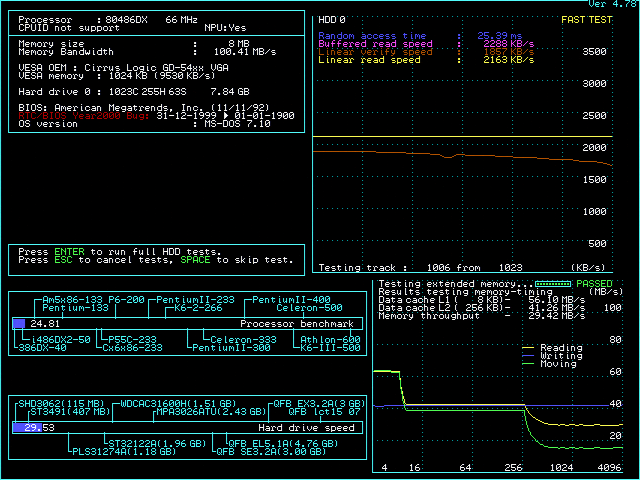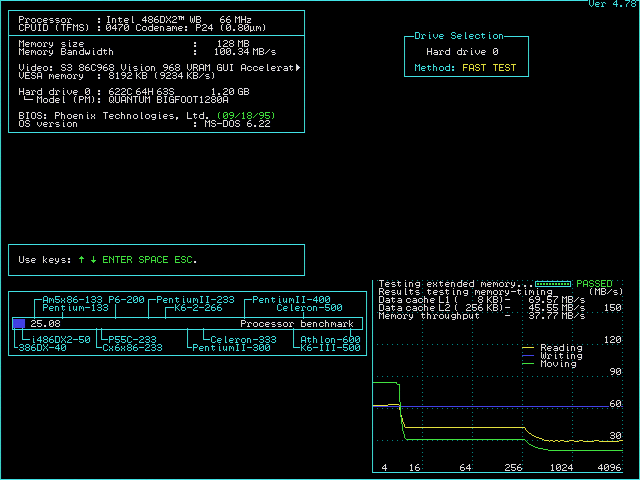First post, by clueless1
- Rank
- l33t
I thought this was pretty interesting. On my recent 486 build, I found some BIOS settings that ended up making a fairly significant difference in performance:
DRAM Speed Option (Auto, Slowest, Slower, Faster, Fastest)
Cache Write Cycle Option (2T, 3T)
Cache Burst Read Cycle (1T, 2T)
I decided to compare between the BIOS defaults and fastest stable settings, which comprised of DRAM Speed Option=Fastest, Cache Write Cycle Option=2T, and Cache Burst Read Cycle=1T.
(you can see a screenshot of the BIOS on pg2 of my original thread linked above)
First up, default settings Speedsys:
Memory bandwidth: 24.47MB/s
L1 Cache: 43.12MB/s
L2 Cache: 26.97MB/s
Memory Throughput: 15.23MB/s
Doom: 24.19fps
Quake: 6.7fps
3dbench: 42.0
PCPBench: 9.0
Next, fastest BIOS timings:
Memory bandwidth: 37.21MB/s
L1 Cache: 55.93MB/s
L2 Cache: 41.08MB/s
Memory Throughput: 23.99MB/s
Doom: 27.05fps
Quake: 7.5fps
3dbench: 46.1
PCPBench: 10.5
Really interesting is comparing the memory/cache timing graphs in the two Speedsys screenshots.
The more I learn, the more I realize how much I don't know.
OPL3 FM vs. Roland MT-32 vs. General MIDI DOS Game Comparison
Let's benchmark our systems with cache disabled
DOS PCI Graphics Card Benchmarks

